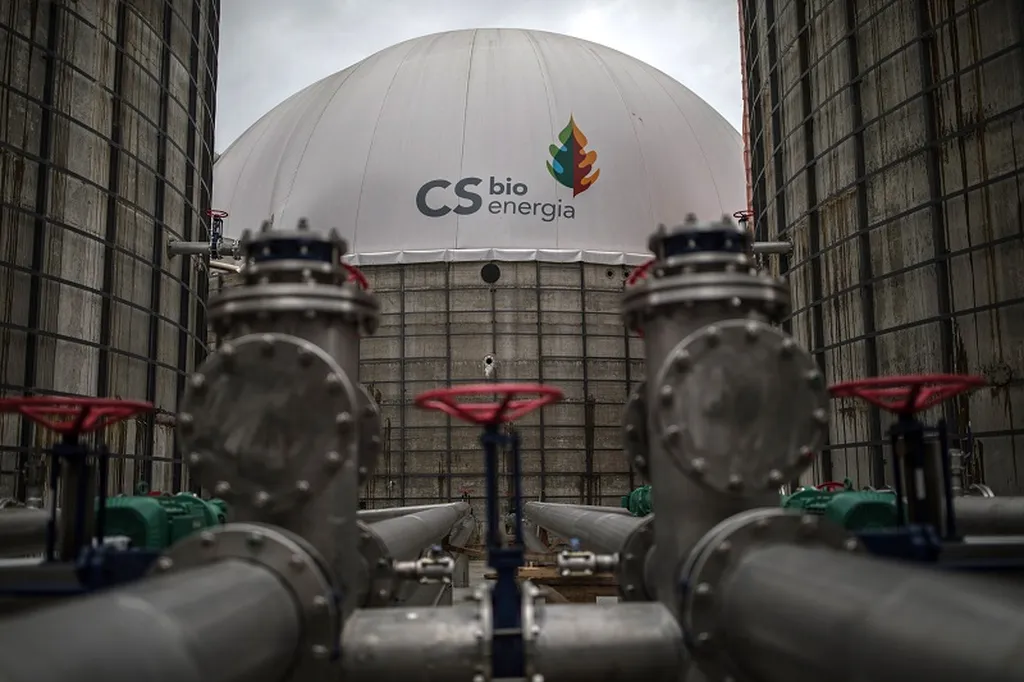In the heart of Brazil, a groundbreaking innovation is poised to revolutionize the energy sector, transforming the way we harness power from organic waste. Researchers at the State University of Campinas (UNICAMP) have developed an electrostimulated anaerobic bioreactor (EAB) that promises to enhance biomethane and biohydrogen production, offering a more efficient and sustainable approach to renewable energy.
The EAB, designed by lead author Carla Flores-Rodriguez and her team at the Interdisciplinary Research Group on Biotechnology Applied to Agriculture and the Environment, is a tubular container with conductive and non-conductive supports arranged radially and alternately. This unique design allows for direct microbial electron transfer through electrical stimulation, significantly boosting reaction kinetics. “The combination of conductive and non-conductive supports creates micro-niches that promote diverse microbial attachment and metabolic activity,” explains Flores-Rodriguez. “This fosters syntrophic interactions, accelerates substrate conversion, and ensures rapid process stabilization, ultimately increasing the overall efficiency of anaerobic digestion.”
The implications for the energy sector are substantial. Traditional anaerobic digestion processes often suffer from slow reaction rates and instability, limiting their commercial viability. The EAB addresses these challenges head-on, offering a more robust and efficient system for treating organic-based substrates and generating renewable energy. “This adaptable platform can produce methane, hydrogen, and recoverable chemicals,” Flores-Rodriguez adds. “It can also be integrated with other bioprocesses for optimization, testing of alternative substrates, or inclusion in biorefineries for developing new bio-based products.”
The potential commercial impacts are vast. Enhanced biomethane and biohydrogen production can significantly contribute to the global shift towards renewable energy, reducing dependence on fossil fuels and mitigating climate change. The EAB’s ability to stabilize processes rapidly and maintain long-term performance makes it an attractive option for industries seeking sustainable and efficient waste management solutions.
Published in the journal “Invention Disclosure” (translated from Portuguese as “Disclosure of Invention”), this research opens new avenues for innovation in the energy sector. As the world grapples with the urgent need for sustainable energy solutions, the EAB stands out as a promising technology that could shape the future of renewable energy production.
The development of the EAB is not just a scientific breakthrough but a beacon of hope for a more sustainable future. As researchers continue to refine and scale up this technology, the energy sector can look forward to a new era of efficiency and sustainability. The EAB’s potential to integrate with other bioprocesses and biorefineries further underscores its versatility and commercial appeal, making it a key player in the global transition to renewable energy.
In the words of Flores-Rodriguez, “This is just the beginning. The EAB represents a significant step forward in our quest for sustainable energy solutions, and we are excited to see how this technology will shape the future of the energy sector.” As the world watches, the EAB stands ready to illuminate the path towards a greener, more sustainable future.

